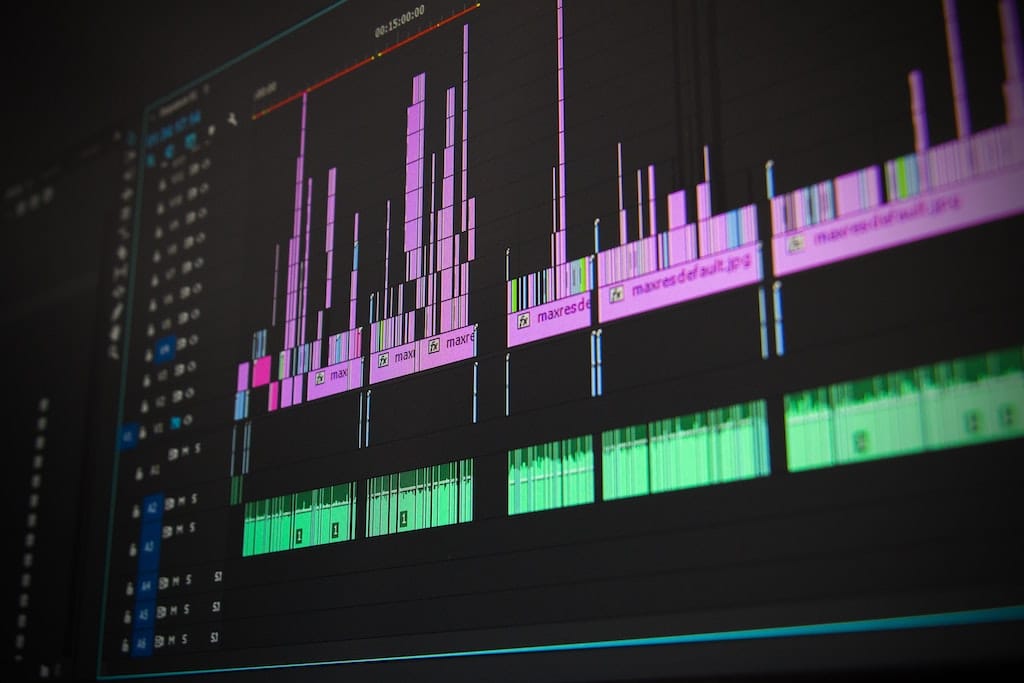Mixing and Mastering Demystified: Achieving Professional Sound Quality

In the realm of music production, two essential steps stand between an artist’s raw creation and the polished, professional sound that graces our ears. These steps are known as mixing and mastering. While both are pivotal in shaping the final sonic outcome of a track, they serve distinct purposes and involve different techniques. In this article, we’re delving into the world of mixing and mastering to demystify these processes and provide you with the knowledge to achieve a professional sound quality for your music.
The Mixing Process Demystified
Imagine a musical composition as a puzzle, with each instrument and element representing a unique piece. The art of mixing involves arranging these pieces in a way that they fit seamlessly together to create a captivating sonic picture. Let’s explore the key components that make up a mix:
1. Balancing Tracks: Levels and Panning
Balancing the levels of different tracks is akin to adjusting the volume faders on a mixing console. This ensures that no individual element dominates the mix, while also highlighting the lead elements. Panning, which involves placing sounds within the stereo field, adds dimension and space to the mix. Panned instruments can create a sense of movement and depth, immersing the listener in a three-dimensional auditory experience.
2. EQ (Equalization): Shaping the Frequency Spectrum
Equalization is a powerful tool that allows you to control the frequency content of each element in the mix. Through EQ, you can carve out space for each instrument by boosting or cutting specific frequency ranges. This prevents elements from clashing and ensures clarity and definition. For instance, EQ can be used to make a bass guitar and kick drum coexist without muddying up the low-end frequencies.
3. Compression: Controlling Dynamics and Adding Warmth
Compression helps control the dynamic range of individual tracks, ensuring that loud parts don’t overpower softer sections. It brings consistency to the mix and can also add a warm, glue-like quality by subtly smoothing out transients. Compression is particularly useful for controlling the vocals’ dynamics and taming overly dynamic instruments.
4. Effects: Reverb, Delay, and More
Effects like reverb and delay add ambience and space to the mix. Reverb simulates the sound of a space and can place elements in different acoustic environments, while delay creates echoes and reflections. Effects contribute to the depth of the mix and can evoke emotions by placing instruments in unique sonic environments.
Tips for Effective Mixing
Crafting a balanced and dynamic mix requires both technical skill and an artistic ear. Here are some tips to help you navigate the mixing process:
1. Organizing Tracks for Clarity
A clean and organized session makes it easier to focus on the creative aspects of mixing. Colour-code tracks, group related instruments, and label tracks clearly to avoid confusion.
2. Using Reference Tracks
Select reference tracks from well-mixed songs in a similar genre. These tracks act as benchmarks, guiding you in terms of tonal balance, dynamics, and overall sound quality.
3. Creating a Sense of Depth and Space
Experiment with reverb and panning to create a sense of depth in your mix. Elements placed at different points in the stereo field and varying degrees of reverb can simulate a three-dimensional soundstage.
4. Avoiding Over-Processing
While processing is essential, it’s easy to overdo it. Maintain a critical ear and remember that subtlety often yields better results. The goal is to enhance the sound, not mask it with excessive effects.
The Mastering Process Demystified
Imagine your music as a sculpted piece of art, complete in its composition and arrangement. Mastering takes this creation and polishes it to perfection, ensuring it shines brightly across all playback systems. While mixing focuses on individual tracks, mastering zooms out to address the cohesive presentation of an entire album or single.
Goals of Mastering
– Tonally Balanced: Mastering engineers fine-tune the tonal balance, ensuring that all frequencies are represented faithfully without any overpowering or missing elements.
– Dynamics: They optimize dynamics to ensure that the track has a balanced range of loud and soft moments. This enhances the emotional impact of the music.
– Loudness: Mastering involves achieving a competitive loudness level, ensuring that your track stands strong in playlists and radio rotations.
– Playback Compatibility: Engineers ensure that the track translates well across various playback systems, from high-end studio monitors to earbuds.
Components of Mastering: Adding the Final Touch
Mastering engineers employ various tools and techniques to achieve the goals mentioned earlier. Here are the key components of the mastering process:
1. EQ Adjustments
Mastering engineers apply subtle EQ adjustments to shape the overall tonal balance. This helps ensure that no frequency range is exaggerated or lacking, resulting in a harmonious sonic spectrum.
2. Multiband Compression
Multiband compression allows engineers to fine-tune the dynamics of different frequency bands. This ensures that various elements—like vocals, drums, and bass—remain balanced throughout the track.
3. Stereo Enhancement
Mastering engineers use stereo enhancement techniques to widen the soundstage, providing a sense of spaciousness. Careful stereo widening can create a more immersive listening experience.
4. Limiting
Limiting is the final step to achieve a consistent loudness level. Engineers apply transparent limiting to prevent the track from clipping or distorting while maximizing its overall volume.
Tips for Effective Mastering
Mastering is both a science and an art, requiring keen listening skills and technical precision. Here are some tips to guide you through the mastering process:
1. Maintain Headroom for Mastering
When delivering a mix to a mastering engineer, ensure that there’s sufficient headroom (-3dB to -6dB) to allow for processing without clipping.
2. A/B Testing with Reference Tracks
Just as in mixing, reference tracks play a vital role in mastering. Compare your track to well-mastered references to ensure it stands up in terms of tonal balance, loudness, and overall impact.
3. Consider the Target Medium
Different distribution platforms (streaming, CDs, vinyl) have varying technical requirements. Consult with your mastering engineer to tailor the mastering settings accordingly.
Common Misconceptions and Pitfalls
In the music industry, there are common misconceptions to be aware of. Firstly, the belief that a louder track is better is a myth; while some loudness is important for grabbing attention, excessive loudness can result in loss of emotional impact due to dynamic range compression. Secondly, the idea of fixing issues during mixing rather than addressing them during recording is flawed. A solid foundation is crucial, as mixing can only do so much. Lastly, neglecting the importance of a well-structured arrangement and composition is a pitfall. No amount of mixing or mastering can compensate for weak musical content. A strong song with captivating elements forms the core of a successful production, underscoring the importance of focusing on arrangement and composition from the start.
In the realm of audio production, there are common pitfalls to be mindful of. Firstly, the trap of over-processing can diminish the quality of your work. While processing is crucial, excessive effects and adjustments can create an unnatural or cluttered sound. Second, the influence of your listening environment on sound perception should not be underestimated. Neglecting proper room treatment and calibration can lead to inaccurate judgments about tonal balance. Lastly, rushing through the mixing and mastering process is a mistake. Taking time for careful evaluation and decision-making, and avoiding impulsive choices, ensures a higher-quality end product.
Unleashing Your Creative Potential
Just as mixing and mastering have their complexities, the creative process is not without its own set of challenges. One of the most formidable obstacles that artists and producers face is writer’s block. This can impede the creative process at any stage, causing frustration and uncertainty. Recognizable signs include difficulty starting, lack of inspiration, self-criticism, avoidance, and loss of enjoyment. To overcome this hurdle, strategies are provided: freewriting and brainstorming, changing environments, embracing limitations, seeking collaboration and feedback, accepting mistakes, and taking breaks. These approaches aim to facilitate a smoother creative flow and guide musicians and producers through creative roadblocks.
Embracing the Creative Journey
As an artist and producer, it’s essential to recognize that creativity is not a static destination but a dynamic journey. Your skills, ideas, and approaches will evolve over time, guided by both triumphs and challenges. Embrace the notion that growth takes time and that the journey is as valuable as the destination.
1. Patience: Just as a mix requires careful adjustments and fine-tuning, your creative journey demands patience. Allow yourself the time to experiment, make mistakes, and learn from them. Patience enables you to refine your craft and develop a unique artistic voice.
2. Perseverance: Challenges, setbacks, and moments of self-doubt are inevitable in any creative endeavour. Perseverance means continuing to create even when faced with obstacles. Every setback is an opportunity for growth, and every breakthrough is a reward for your persistence.
3. Reflect and Reimagine: Periodically pause to reflect on your creative journey. Revisit your older works, celebrate your progress, and identify areas for improvement. Use this reflection to reimagine your future goals and aspirations.
Embracing Imperfection
Striving for perfection can be both a driving force and a hindrance. While it’s important to aim for excellence, remember that imperfections are part of the human experience. Flaws and quirks in your music can add character and authenticity. Embrace your uniqueness, and allow imperfections to shape your creative identity.
Celebrate Milestones
Throughout your creative journey, celebrate your milestones—both big and small. Finishing a song, mastering a complex technique, or receiving positive feedback are all achievements worth acknowledging. Celebrating milestones fuels your motivation and reinforces your dedication to the craft.
The Unending Quest
As we conclude our exploration, remember that the path to achieving professional sound quality is an unending quest. There will always be new techniques to learn, creative challenges to conquer, and sonic horizons to explore. Embrace the joy of discovery, the thrill of experimentation, and the satisfaction of translating your artistic vision into reality.
Whether you’re mixing, mastering, composing, or simply nurturing your creative spirit, know that the journey is as important as the destination. Continue to learn, grow, and innovate as you evolve as an artist and producer.





